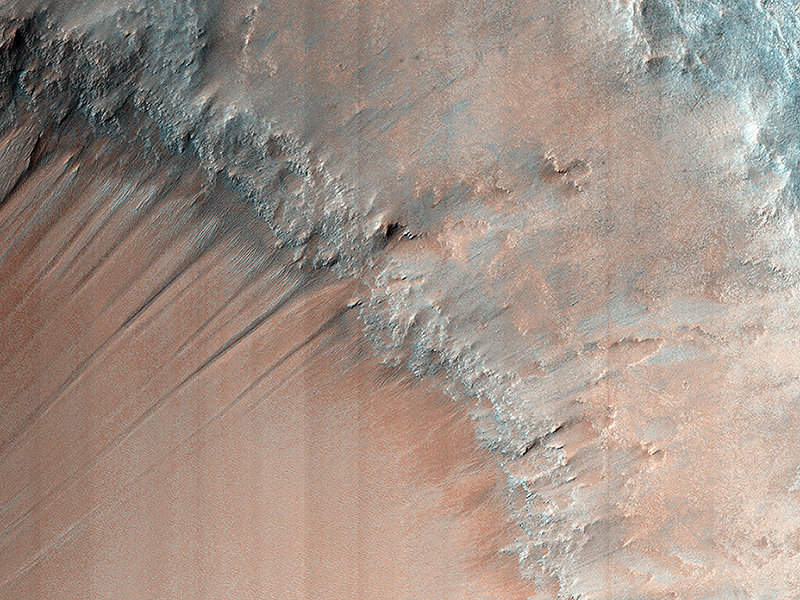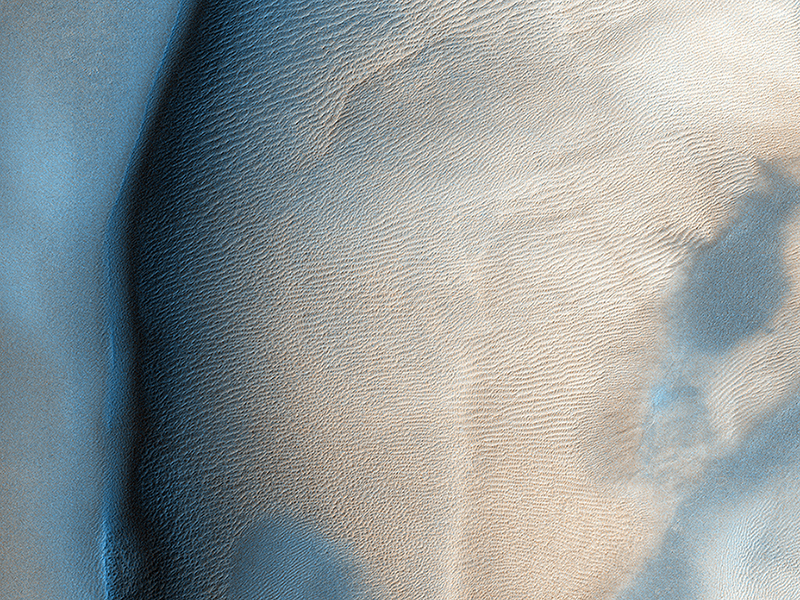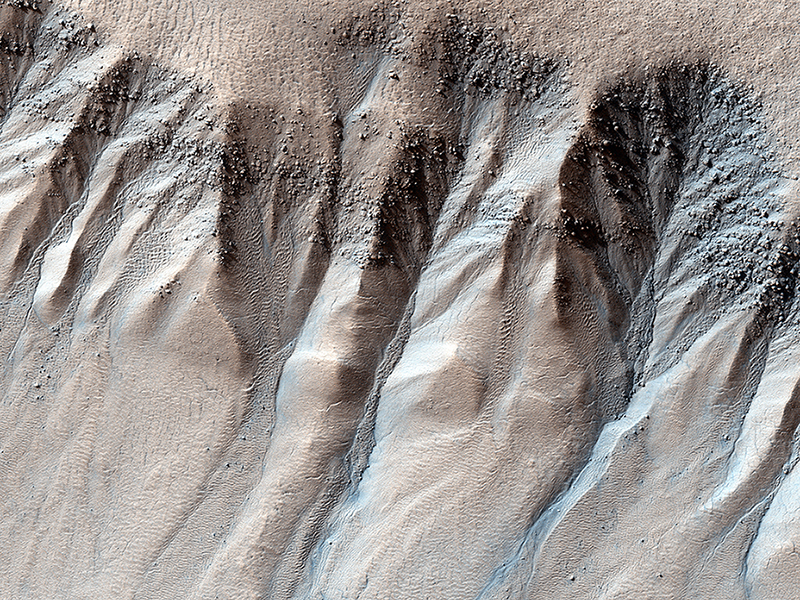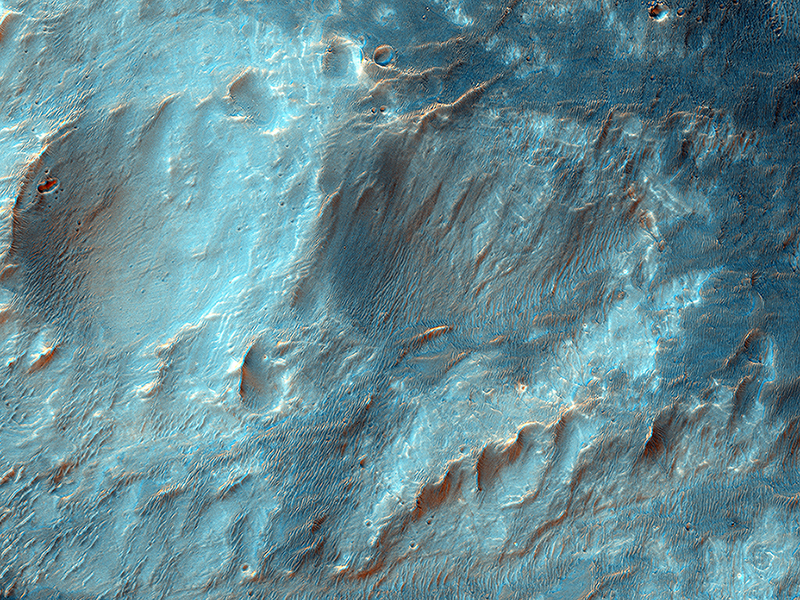Livio Tornabene and Kayle Hansen wrote:Gullies and Bedrock in Nirgal Vallis (ESP_020087_1515) (HiClip)
The gullies in this image are within the valley wall of an ancient channel—Nirgal Vallis—a testament to flowing water in Mars’ ancient past. However, the formation of gullies are still the subject of much debate with respect to their formation: “wet” vs. “dry” or even “dry” with the aid of some lubricating fluid.
Gullies most commonly form in the steep walls of simple craters. Gullies are common even in cold arctic deserts on Earth (e.g., the Haughton impact structure on Devon Island). This suggests that these provocative features can form on a mostly dry Mars that is only sporadically wet.
Regardless, these features bear a remarkable resemblance to flowers, including the blossom, petals, stem, and roots. Can you see it too?
This is a stereo pair with ESP_019810_1515.
Kirby Runyon wrote:A Large, Longitudinal Dune (ESP_039568_1120) (HiClip)
Taken in late southern spring and when Mars is near perihelion (closest distance to the Sun), this image shows the effects of dry ice sublimation on a longitudinal dune in the far Southern hemisphere. The bright patches on the dune are still covered in frost, and the dark regions are frost-free.
Longitudinal dunes form when the wind switches between two common directions*. Based on the direction of this dune’s long crest and the orientation of the smaller ripples, it appears the wind blows from the east and from the northwest. However, it would require taking multiple HiRISE images of this location over time and noticing movement before we could say this definitively.
The broad base of this dune may indicate that dune sand has spilled out from areas once covered in ice.
During the next Martian Southern hemisphere winter (about half a Mars year or one Earth year from when this image was taken), this dune will again be covered in frost and possibly solid carbon dioxide ice, unable to blow in the wind until the volatiles begin to sublimate in the spring.
*These are ripples indicating a wind out of the north/northwest. The scene is 250 m across.
Candy Hansen wrote:Boulders in Gully Alcoves (ESP_039747_1090) (HiClip)
Gullies are often found on steep slopes. In the winter, this area is covered with a layer of carbon dioxide ice (dry ice). In the spring, when the ice warms up and transitions to gas, it dislodges material on the slope, forming a gully.
In general, this process works best on fine material, leaving behind large boulders. These boulders can be seen collected in the gully alcoves. Occasionally, boulders slide or roll downhill, like those sprinkled downslope in this image.
This set of gullies is found at -71 degrees latitude in the Southern hemisphere.
Sharon Wilson wrote:Fan-Shaped Deposits in Bigbee Crater (ESP_039893_1550) (HiClip)
Bigbee is a 21 kilometer-diameter impact crater located on the northern rim of Holden crater in southern Margaritifer Terra, a region on Mars that is well known for its long record of water-rich activity.
The rim of Bigbee has been heavily modified from its original form, presumably by water and wind. Material eroded and removed from Bigbee’s rim was transported and deposited to the crater interior. Some of the darker-toned material near Bigbee’s northern rim has been incorporated into fan-shaped deposits with distinct margins at the outer part. The fan surfaces appear to lack obvious layering and channels.
The modification of Bigbee and other smaller craters on Holden’s rim may have been contemporaneous with a proposed period of relatively late, water-driven activity that formed fans in Holden and other craters in Margaritifer Terra (see Grant and Wilson, 2012).
Note: The cutout is 3.5-kilometer across and shows dark fan-like deposits on left side of image at the base of a light-toned scarp.
Credit: NASA/JPL/University of Arizona
<< Previous HiRISE Update



